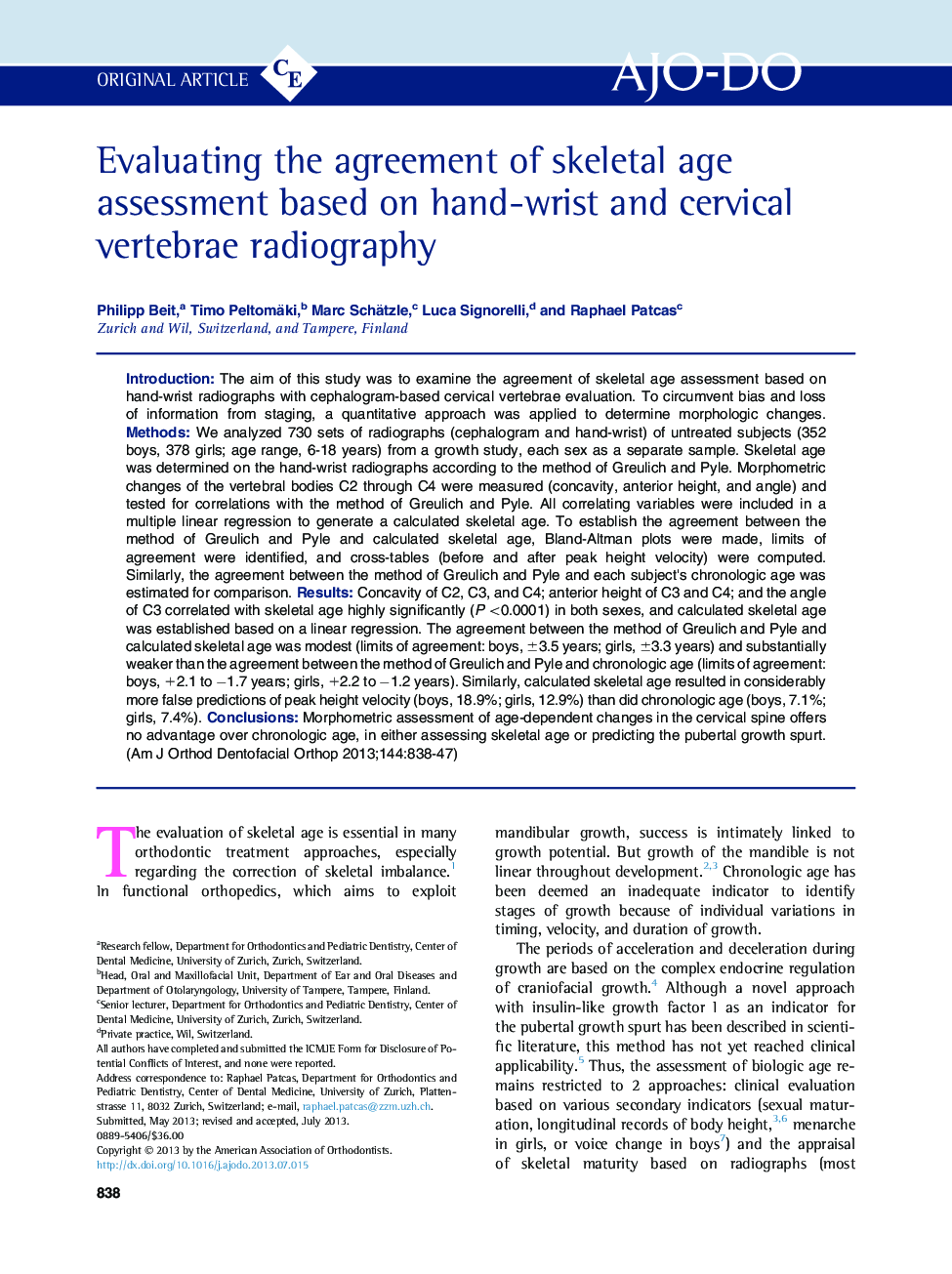| Article ID | Journal | Published Year | Pages | File Type |
|---|---|---|---|---|
| 3116442 | American Journal of Orthodontics and Dentofacial Orthopedics | 2013 | 10 Pages |
IntroductionThe aim of this study was to examine the agreement of skeletal age assessment based on hand-wrist radiographs with cephalogram-based cervical vertebrae evaluation. To circumvent bias and loss of information from staging, a quantitative approach was applied to determine morphologic changes.MethodsWe analyzed 730 sets of radiographs (cephalogram and hand-wrist) of untreated subjects (352 boys, 378 girls; age range, 6-18 years) from a growth study, each sex as a separate sample. Skeletal age was determined on the hand-wrist radiographs according to the method of Greulich and Pyle. Morphometric changes of the vertebral bodies C2 through C4 were measured (concavity, anterior height, and angle) and tested for correlations with the method of Greulich and Pyle. All correlating variables were included in a multiple linear regression to generate a calculated skeletal age. To establish the agreement between the method of Greulich and Pyle and calculated skeletal age, Bland-Altman plots were made, limits of agreement were identified, and cross-tables (before and after peak height velocity) were computed. Similarly, the agreement between the method of Greulich and Pyle and each subject's chronologic age was estimated for comparison.ResultsConcavity of C2, C3, and C4; anterior height of C3 and C4; and the angle of C3 correlated with skeletal age highly significantly (P <0.0001) in both sexes, and calculated skeletal age was established based on a linear regression. The agreement between the method of Greulich and Pyle and calculated skeletal age was modest (limits of agreement: boys, ±3.5 years; girls, ±3.3 years) and substantially weaker than the agreement between the method of Greulich and Pyle and chronologic age (limits of agreement: boys, +2.1 to −1.7 years; girls, +2.2 to −1.2 years). Similarly, calculated skeletal age resulted in considerably more false predictions of peak height velocity (boys, 18.9%; girls, 12.9%) than did chronologic age (boys, 7.1%; girls, 7.4%).ConclusionsMorphometric assessment of age-dependent changes in the cervical spine offers no advantage over chronologic age, in either assessing skeletal age or predicting the pubertal growth spurt.
